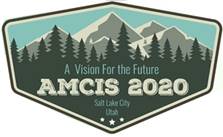Loading...
Paper Type
Complete
Abstract
In recent years generators have gained more and more impact on current software development methods and help to rapidly create complex software. Nevertheless, developers still must ensure consistency among used models and cannot easily edit or extend the generated code. This paper presents our approach which can be used to create an executable prototype of an Enterprise Information System based only on a data structure model. This prototype, which is still easily adaptable and extendable, can be used for analysis exploration and build a solid foundation for the final system. The presented approach transforms a data structure model to changeable and extendable graphical user interface models. These are defined using a domain-specific language named GuiDSL. In a second step, the data structure model and the GUI models are used to generate the resulting system. This approach allows the developer to generate (a) persistence, (b) basic application logic, (c) transportation layers, and (d) a variety of possible graphical representations (represented as GUI models) for the prototype-based only on a data structure model. Extensions and changes of the GUI are still possible on model and code level. This is possible by synthetization of GUI models and change operations defined in the same domain-specific language. This paper presents our approach and highlights its potential and current limitations.
Recommended Citation
Gerasimov, Arkadii; Michael, Judith; Netz, Lukas; Rumpe, Bernhard; and Varga, Simon, "Continuous Transition from Model-Driven Prototype to Full-Size Real-World Enterprise Information Systems" (2020). AMCIS 2020 Proceedings. 2.
https://aisel.aisnet.org/amcis2020/systems_analysis_design/systems_analysis_design/2
Continuous Transition from Model-Driven Prototype to Full-Size Real-World Enterprise Information Systems
In recent years generators have gained more and more impact on current software development methods and help to rapidly create complex software. Nevertheless, developers still must ensure consistency among used models and cannot easily edit or extend the generated code. This paper presents our approach which can be used to create an executable prototype of an Enterprise Information System based only on a data structure model. This prototype, which is still easily adaptable and extendable, can be used for analysis exploration and build a solid foundation for the final system. The presented approach transforms a data structure model to changeable and extendable graphical user interface models. These are defined using a domain-specific language named GuiDSL. In a second step, the data structure model and the GUI models are used to generate the resulting system. This approach allows the developer to generate (a) persistence, (b) basic application logic, (c) transportation layers, and (d) a variety of possible graphical representations (represented as GUI models) for the prototype-based only on a data structure model. Extensions and changes of the GUI are still possible on model and code level. This is possible by synthetization of GUI models and change operations defined in the same domain-specific language. This paper presents our approach and highlights its potential and current limitations.
When commenting on articles, please be friendly, welcoming, respectful and abide by the AIS eLibrary Discussion Thread Code of Conduct posted here.


